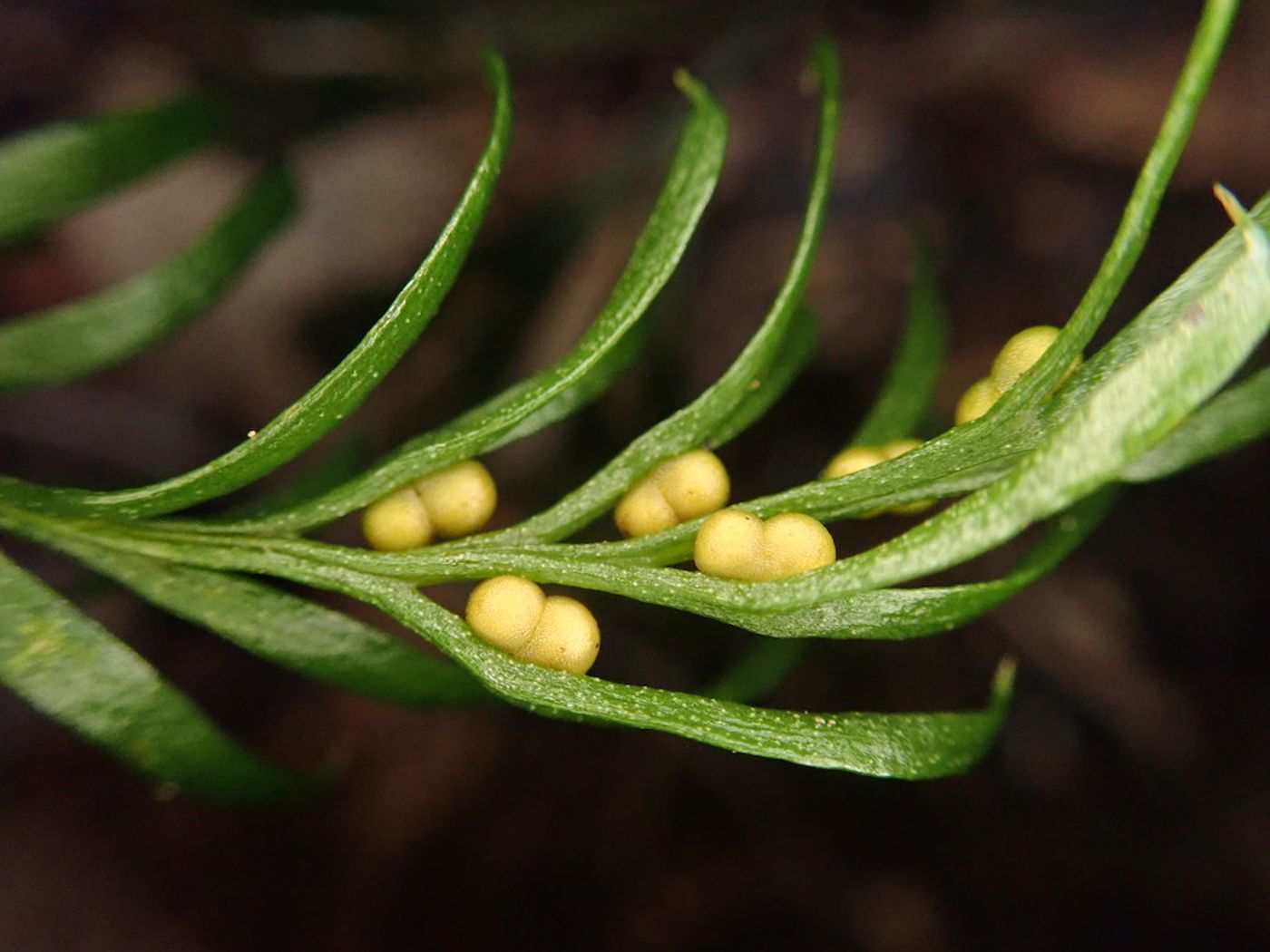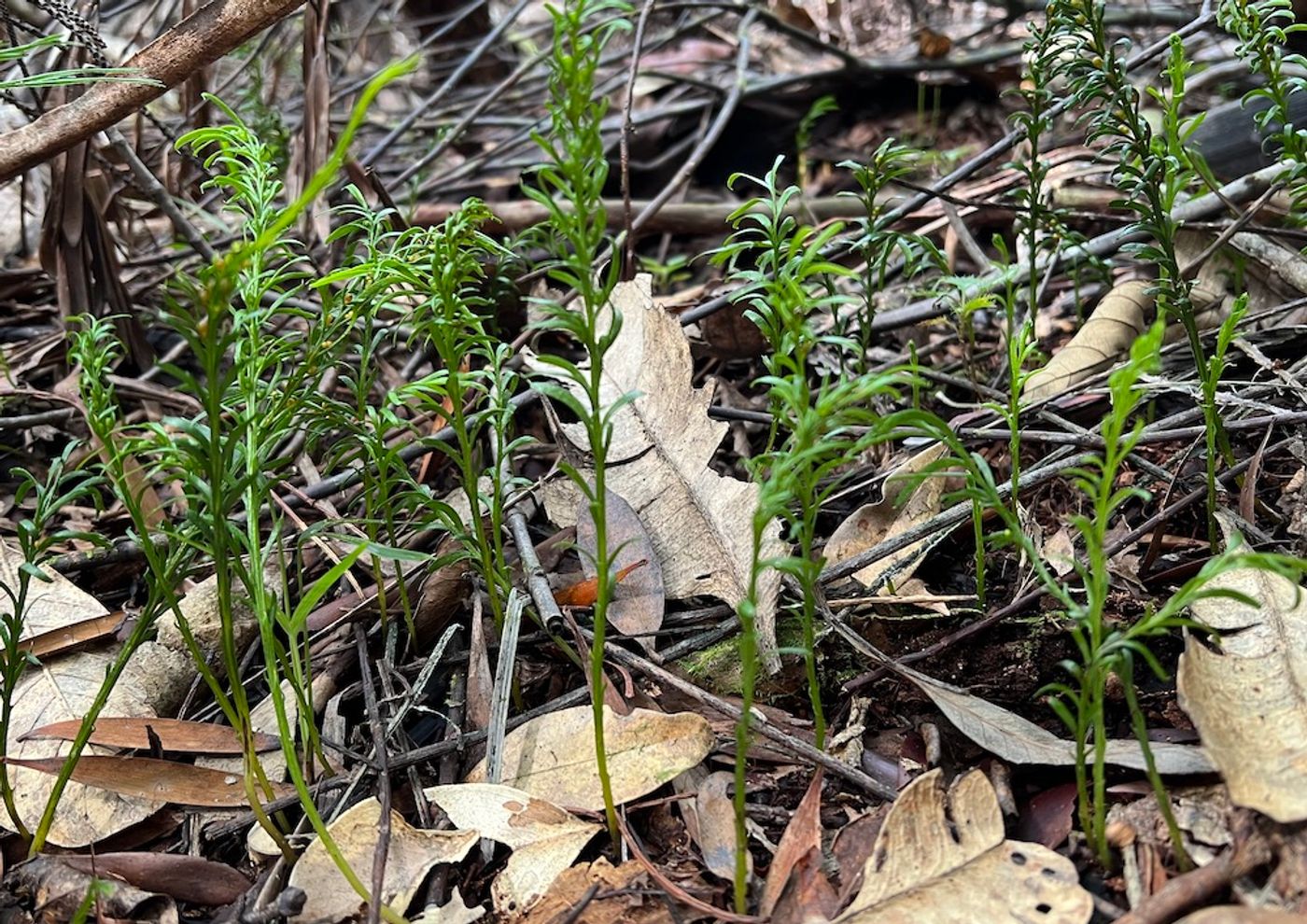A Tiny Fern with the World's Biggest Genome
A little plant, the New Caledonian fork fern species Tmesipteris oblanceolata has now taken the title of world's largest genome holder, according to a new study in iScience, and three new Guinness World Records titles: "Largest fern genome for the amount of DNA in the nucleus," Largest Plant Genome, and Largest Genome. In the nuclei of each cell of this plant is a genome that is over 100 meters in length when unspooled; it contains 50 times more DNA than the previous largest genome title holder.
T. oblanceolata is a species of fern that lives on some islands in the South Pacific including New Caledonia and Vanuatu. There are only fifteen species of plants in the genus Tmesipteris, most of which are found on various Pacific Islands. Two other species of ferns in this group also have huge genomes: T. tannensis has a 73.19 gigabase pair (Gbp) genome and T. obliqua has a 147.29 Gbp genome.
By comparison, humans have a genome that is 3.1 Gbp, and would stretch to about two meters when unspooled. Some animals with larger genomes are the marbled lungfish (Protopterus aethiopicus) with a 129.90 Gbp genome, and the Neuse River waterdog (Necturus lewisi) at 117.47 Gbp.
"Tmesipteris is a unique and fascinating small genus of ferns, whose ancestors evolved about 350 million years ago, well before dinosaurs set foot on Earth," said senior study author Dr. Jaume Pellicer of the Institut Botànic de Barcelona (IBB-CSIC). It is also epiphytic, meaning that it primarily grows on tree trunks and branches, and is only found on Oceania and some Pacific Islands.
The study authors obtained samples of T. mesipteris from New Caledonia for this research, and stained thousands of cells to visualize their genomes. More dye indicated a larger genome.
Having a big genome is not necessarily a great thing. Plants that have large genomes are perennials that grow slowly, and are not as efficient at performing photosynthesis.
"Who would have thought this tiny, unassuming plant that most people would likely walk past without notice, could bear a world-beating record in genome size," said study co-author Dr. Ilia Leitch, a Senior Research Leader at Royal Botanic Gardens, Kew.
"Compared to other organisms, plants are incredibly diverse when viewed at the DNA level, and that should make us pause to think about their intrinsic value in the wider picture of global biodiversity. This discovery also raises many new and exciting questions about the upper limits of what is biologically possible, and we hope to solve these mysteries one day."
Sources: Royal Botanic Gardens, Kew; iScience










